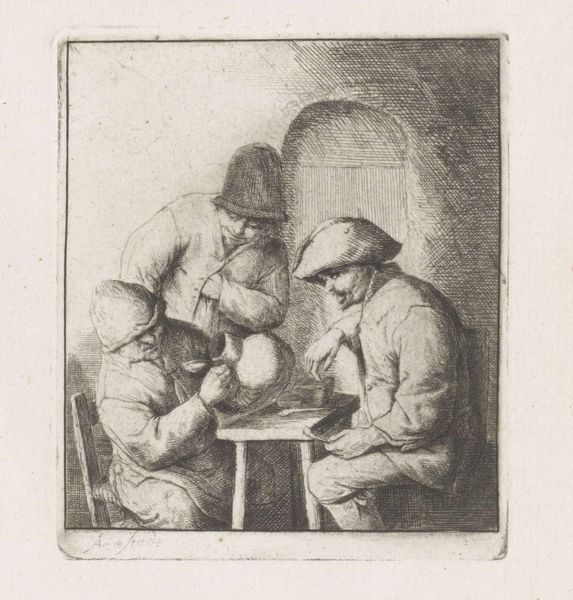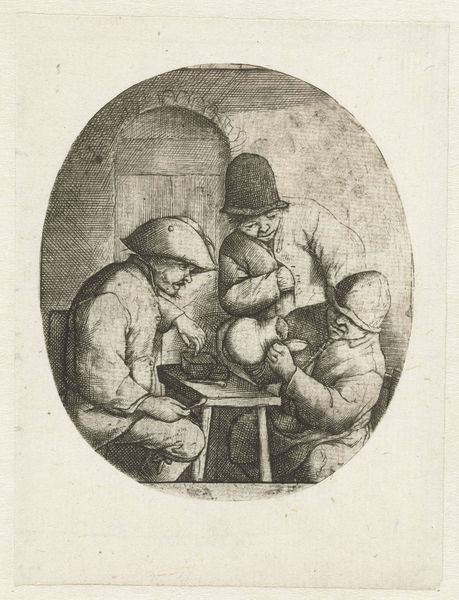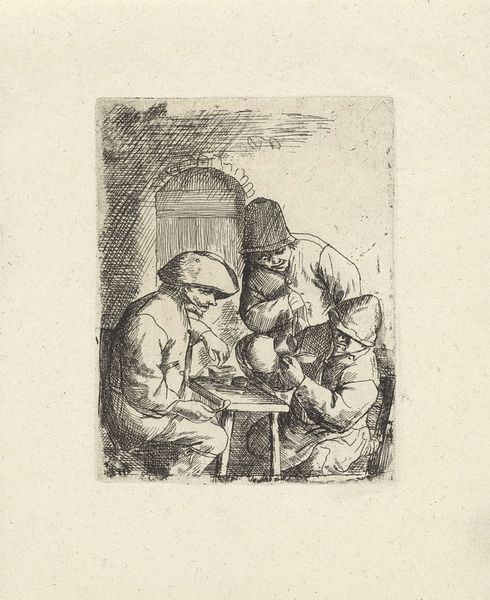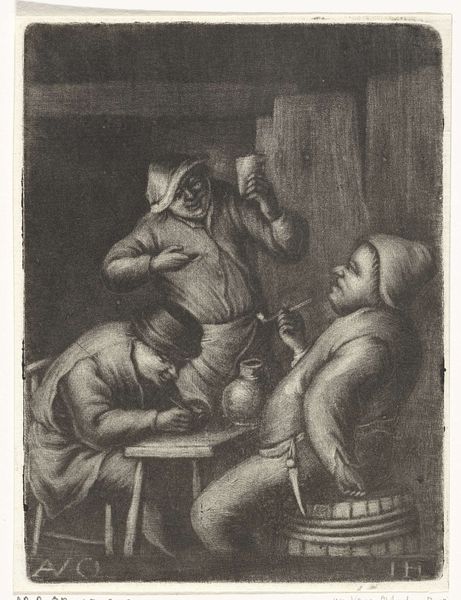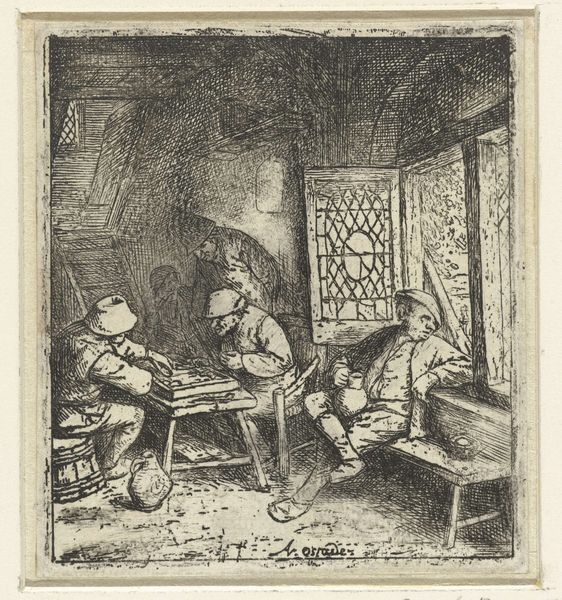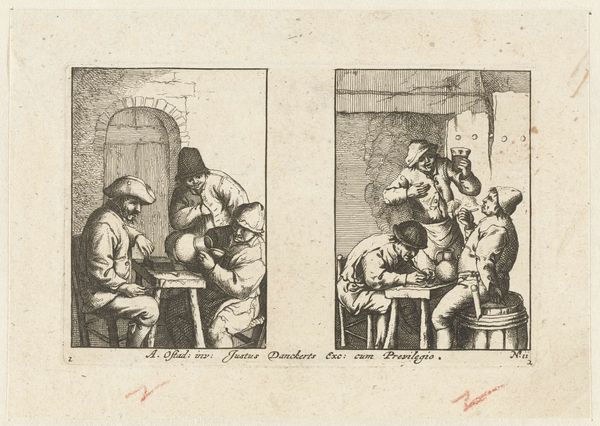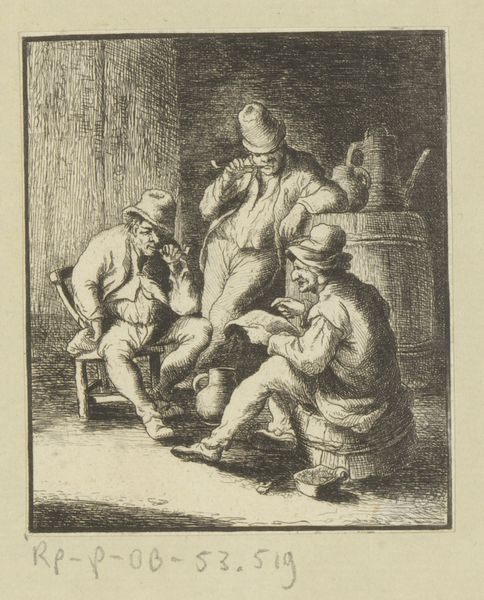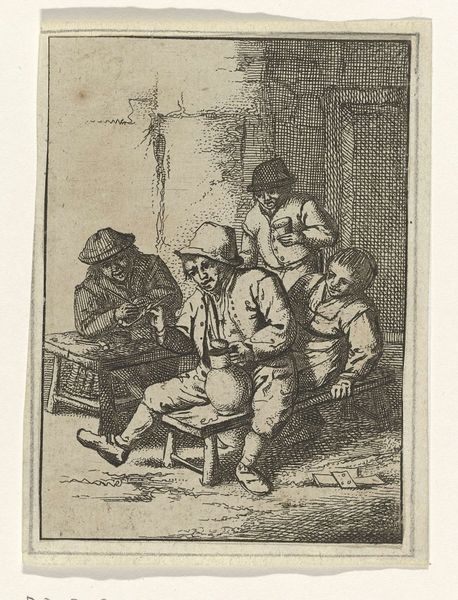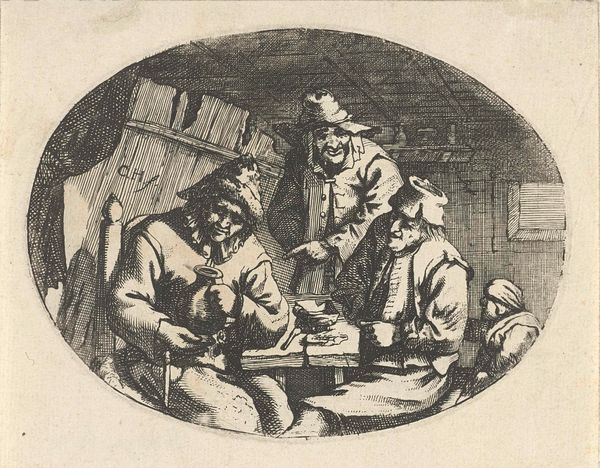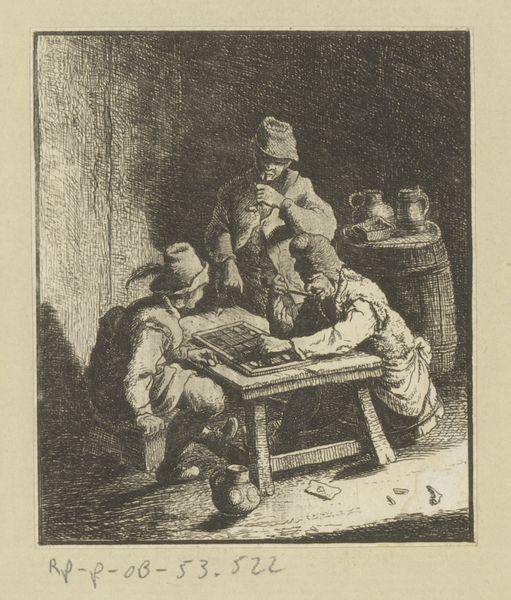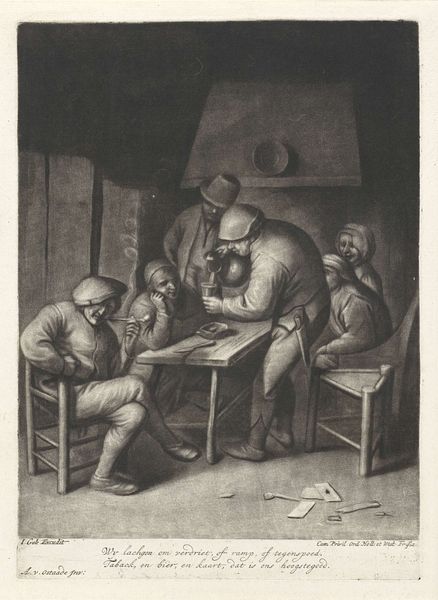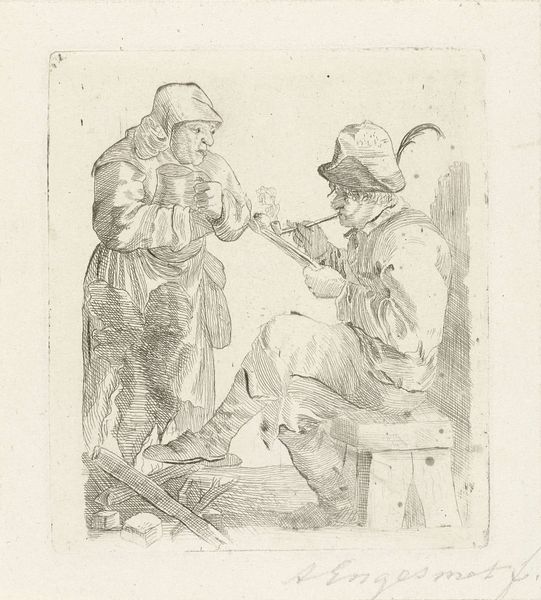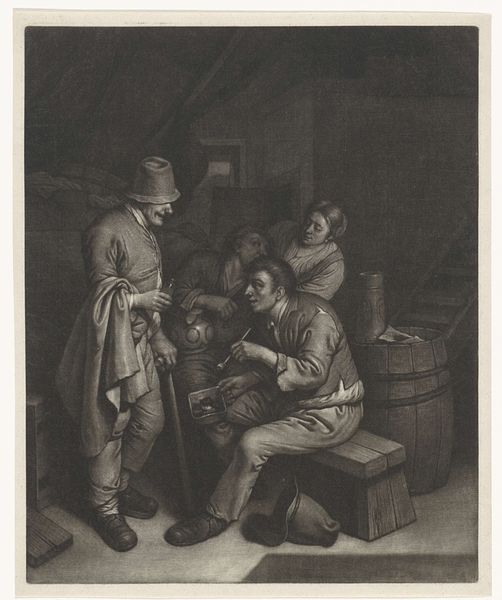
print, etching
#
narrative-art
#
dutch-golden-age
# print
#
etching
#
old engraving style
#
figuration
#
genre-painting
Dimensions: height 103 mm, width 89 mm
Copyright: Rijks Museum: Open Domain
Editor: This is "Man looking into an empty jug, two men watching" by Adriaen van Ostade, dating from around 1651 to 1655. It's an etching, so a print. The scene is of three men in what looks like a simple interior. There's a real sense of mundane life captured here, but it feels a little bleak. What do you see in this piece? Curator: For me, this piece opens up questions about the conditions of its production and consumption. Etchings like this one by van Ostade were often made in multiples, intended for a market beyond the elite. How does the relative ease of production afforded by the etching process democratize art-making and consumption? This is opposed to more high-art commodities for the wealthy. Editor: That’s interesting. So, the very nature of it being an etching speaks to a different kind of accessibility? I was so focused on what was *depicted*, the narrative… Curator: Exactly! Consider the materials themselves: the metal plate, the acid used for etching, the paper. These are not precious materials in the same way that, say, oil paints and canvas were then perceived. Also, look closely at the men; are we looking at a romantic vision of everyday life, or is there a commentary being made here about class and labor? How is he depicting the clothing of working men in their quotidian surroundings? Editor: That’s a good point, I am now less focused on just reading it as a funny scene of an empty jug, but about how class plays into it too... How does knowing that this image could have been widely distributed change our perception of its message? Curator: Precisely! It forces us to think about the intended audience and how that audience might have interpreted the image. What are their lives like in contrast to the viewer? How the working classes were presented for consumption by other social groups becomes a central consideration in understanding it. Editor: I see. So, thinking about the material and the production of this print completely shifts how we interpret the scene itself. It's not just about what's in the image, but how it was made, for whom, and what it represents in the wider context of 17th-century Dutch society. Thanks! Curator: Precisely, now let's examine some tapestries...
Comments
No comments
Be the first to comment and join the conversation on the ultimate creative platform.
